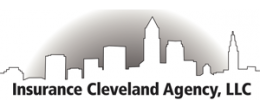 There are many ways to save your family money on the price of home insurance. Installation of alarm systems, smoke detectors and deadbolt locks make your home safer, more secure and save you money on your insurance costs. On the other hand, owning an in-ground pool, a dog that is considered a vicious breed or having a trampoline on your property can raise your premiums, or in some cases you may not even be able to get coverage with certain companies. You can also expect to pay more if you are located in a higher risk area, such as a coastline. Your insurance company will also want to know if you plan to use the home for any business purposes, of if you plan to rent all or part of the house, both of which can increase liability.
There are many ways to save your family money on the price of home insurance. Installation of alarm systems, smoke detectors and deadbolt locks make your home safer, more secure and save you money on your insurance costs. On the other hand, owning an in-ground pool, a dog that is considered a vicious breed or having a trampoline on your property can raise your premiums, or in some cases you may not even be able to get coverage with certain companies. You can also expect to pay more if you are located in a higher risk area, such as a coastline. Your insurance company will also want to know if you plan to use the home for any business purposes, of if you plan to rent all or part of the house, both of which can increase liability.
Having all of this information on had can help insurance companies determine how much to charge you for insurance, sometimes in a matter of minutes.
Dollar Limits on Insurance Policies
It is very important for you as the insurance holder to know your policy’s limit. If you insure your house for $100,000, that ́s the most you will get if it is destroyed, even if it would cost more to replace it. Don’t wait until you have a claim to learn your policy ́s limit. This important and useful information can be found on the Declarations Page which is on the front of your policy.
Replacement cost coverage for your personal property
Before purchasing homeowner’s insurance, make sure you are clear on the difference between “replacement cost” and “actual cash value”. Most homeowner policies contain replacement cost coverage on the home and actual cash value coverage on personal property.
Homeowner’s policies automatically cover household contents – furniture, clothes, appliances, etc. – up to 40 percent of the amount your house is insured for. This means if you insure your house for $100,000, its contents are insured for up to $40,000. By paying a higher premium, you can get more coverage. This coverage pays only the actual cash value of damaged, stolen, or destroyed household goods. Actual cash value can be calculated as an item’s replacement cost, minus depreciation.
Replacement cost policies can give you more protection than actual cash value coverage. For example, with actual cash value coverage if you have a six-year-old television set stolen from your home you will only get what you would expect to pay for a six-year-old television set. With replacement cost coverage, the insurance company pays to replace your TV with a new set similar to the stolen one.
Insurance companies generally want proof you replaced an item before paying your claim in full. An insurer might offer to replace the items instead of paying cash, but the choice is yours.
Take inventory
Many people learn after a fire or storm they didn ́t have enough personal property coverage. Taking inventory will help you decide how much insurance you need. It also will simplify claims.
Your inventory should list each item, its value, and serial number. Photograph or videotape each room, including closets, open drawers, storage buildings, and your garage. Keep receipts for major items in a fireproof place.
